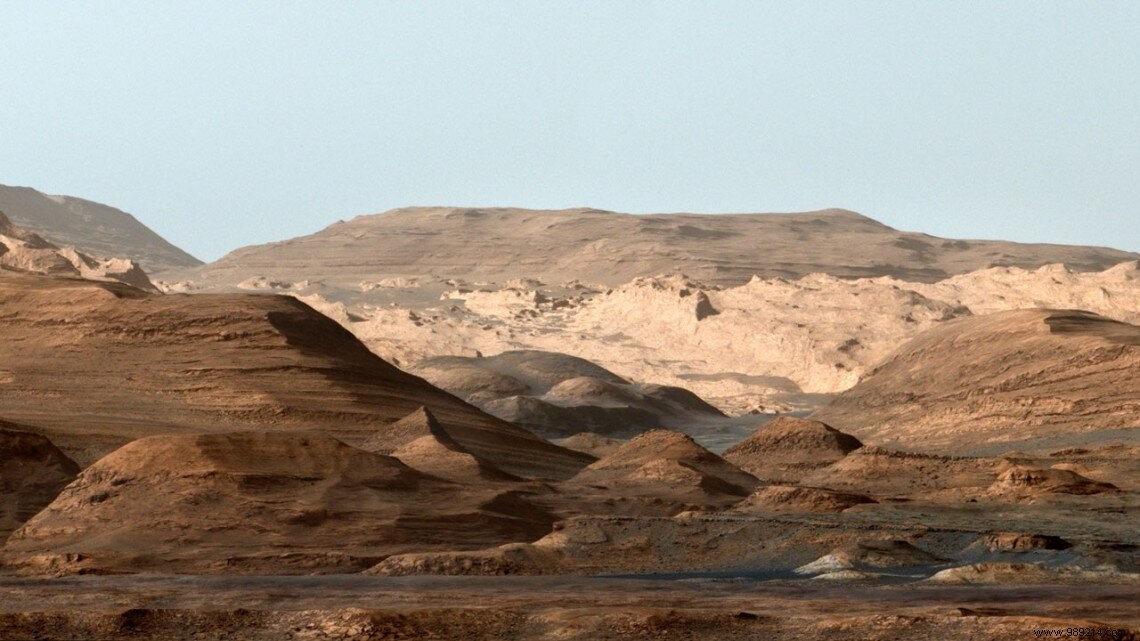New data collected on Mars by Curiosity proves that a mega-flood swept through Gale Crater (where the rover is operating) about four billion years ago . Details of this work are published in Scientific Reports .
About four billion years ago, a gigantic body of water at least twenty meters deep moved through Gale Crater at more than nine meters per second , leaving behind gigantic surface ripples almost 2.5 meters high and spaced about 140 meters apart. Traces "identical" to features formed by melting ice on Earth about two million years ago. This is the conclusion of a team of scientists based on new sedimentary data collected by the American rover Curiosity, on site since 2012.
According to the researchers, this Martian mega-flood was generated following the impact of a meteor whose heat would have released carbon dioxide and methane from the planet's frozen reservoirs. The water vapor and the release of gas would then have combined to provide hot and humid conditions, favoring the formation of torrential rains. This water would then have entered Gale Crater, combining with the water descending from Mount Sharp (also in Gale Crater) to produce gigantic flash floods.

The Curiosity rover science team had already established that Gale Crater was once lined with persistent lakes and streams. The presence of these bodies of water therefore suggests that Mars may once have been able to support microbial life. Nevertheless, was it inhabited for all that? This is a question that Perseverance will have to answer. Launched from Cape Canaveral on July 30, the rover should reach the Red Planet on February 18.
Note that Perseverance will not land in Gale Crater, but in Jezero Crater. And for good reason, this formation, 45 km in diameter and 500 meters deep, is also supposed to have sheltered water between3.5 and 3.9 billion years ago . According to a study, the area also contains significant deposits of hydrated silica. It is a particularly effective mineral for the preservation of biosignatures and microfossils.
Once there, the rover will be able to perform chemical analysis of these deposits. It will also be able to search for the presence of organic matter in these deposits. Finally, there will also be talk of putting several samples under seal in order to bring them back to Earth through a future mission. Once in our laboratories, researchers will then be able to analyze them with state-of-the-art instrumentation.